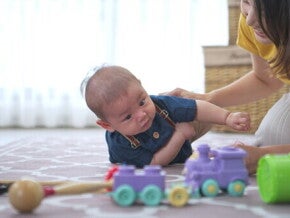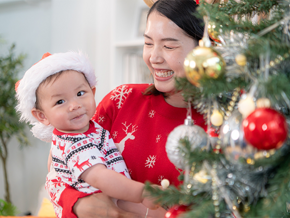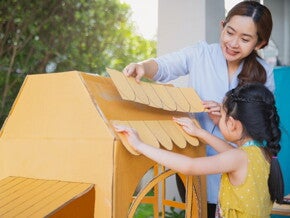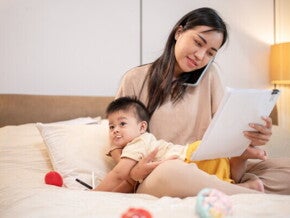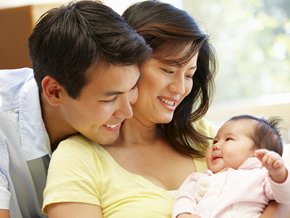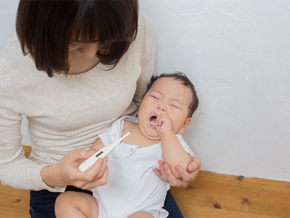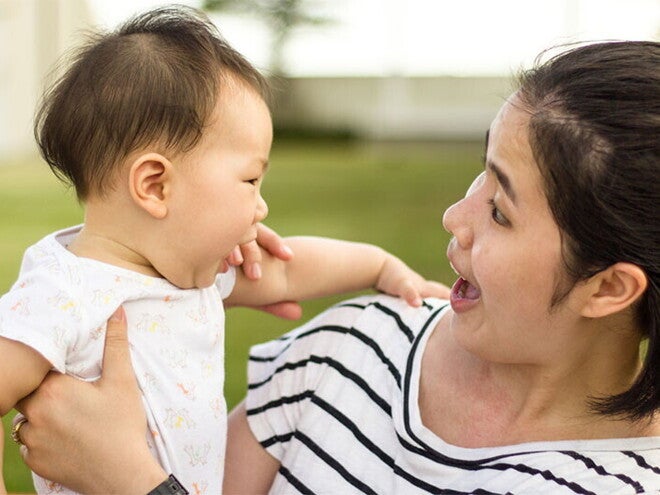
There’s something magical about hearing your baby talk. Whether it’s hearing them say “mama,” “dada,” or “kitty,” that little voice is heart melting. It might sound gibberish to others, but for moms, it’s the sweetest soundtrack to early childhood.
And here’s the good news: you don’t need fancy flashcards or apps. Studies show everyday moments—singing, playing, and feeding—truly shape language development.
A Stanford study showed that babies who hear more spoken words from their caregivers tend to develop faster processing speeds and larger vocabulary by two. And the Philippine Pediatric Society points out that real-time communication is what helps babies thrive.
So how do we turn those babbles into real words? Let’s break it down.
A Timeline for Baby’s First Words
When do babies start talking? Every baby has their own timeline, but here are the general milestones to expect, according to the U.S. Centers for Disease Control and Prevention (CDC) and the American Speech-Language-Hearing Association (ASHA):
- 2–3 months: Cooing, soft vowel-like sounds like "oooh" and "ahhh"
- 4–6 months: Babbling, repetitive sounds like "ba-ba" and "da-da"
- 7–12 months: Variegated babbling, mixing sounds and playing with tone
- 10–14 months: First meaningful words like "mama" or "ball" often pop up
- 12–15 months: Their word bank starts to grow and they understand more than they can say
The more you talk to your baby, the more they learn. A study in Developmental Science found that babies exposed to more parent-child talk developed stronger language skills by 18 months.
How to Encourage Baby’s First Words
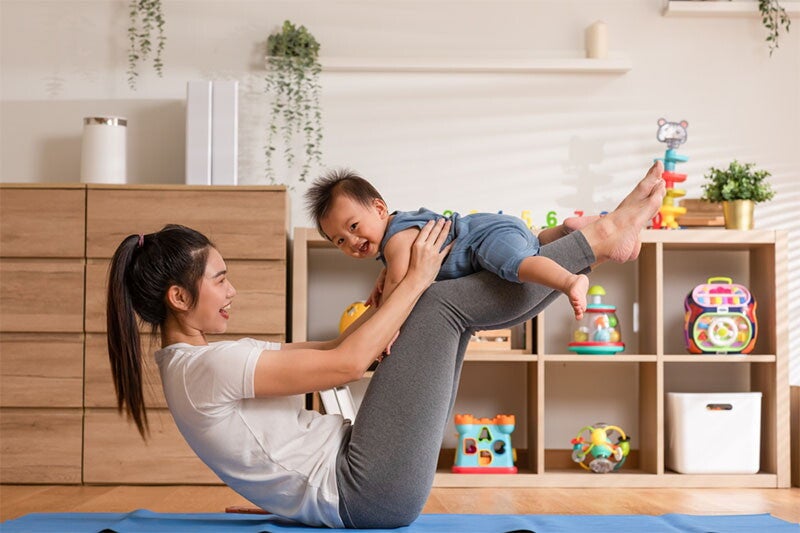
Wondering how to teach baby how to talk? It starts with simple moments, such as playing, smiling, and responding.
Babies learn how to speak from the people who love them the most. These tried and tested strategies are easy to weave into your child’s routine:
1. Talk to your baby...a lot!
Chat away to your baby and encourage caregivers to do the same. You can start by narrating your daily routine like a tour guide: "Now we’re brushing your teeth so your breath smells good!" It might feel silly, but these little moments add up. Babies need to hear real, everyday language to build their vocabulary.
2. Respond and imitate sounds
When your baby babbles, talk back! Mimic their sounds and add a word or two: "ba...ball!" You’re showing that your voice matters, and conversation is a two-way street. In fact, a study from the Journal of Child Language found that babies who experience more of these responsive exchanges hit speech milestones earlier.
3. Add on to baby’s words
If they say "mama," reply with "Yes, I am your mama!"There’s no need to correct them at this stage, just show them how to speak in full sentences. This boosts their understanding instead of discouraging them from trying.
4. Use gestures
Pointing at a ball and saying "ball" or waving while saying "bye-bye" helps babies link words with actions. Research in Child Development shows that babies who pair gestures with early speech tend to have larger vocabularies by age 2.
5. Read books and sing songs
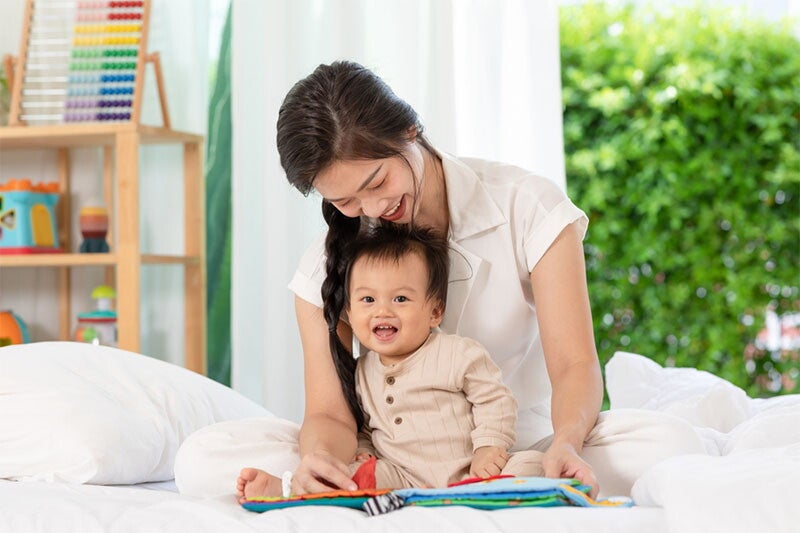
Reading to your baby is a sweet first step to early talking.
Books and songs are wonderful tools for language learning. Try reading stories aloud, pointing to pictures, and singing simple nursery rhymes. According to a study in Early Childhood Research Quarterly, shared book reading significantly boosts babies’ expressive vocabulary.
For babies, sturdy board books are ideal—they're drool-proof and tough enough to survive a curious tug or two.
6. Keep language simple and repetitive
Babies don’t need fancy words, just clear ones. Repeating simple phrases like "drink milk" or "go outside" helps them associate words with routines. The more often they hear it, the faster they learn.
7. Encourage imitation through play
Peek-a-boo, pat-a-cake, and pretend tea parties are fun, and they're also powerful language tools. These activities teach turn-taking and communication while keeping things playful. Let your child watch your lips while you speak to help them copy mouth movements and sounds.
8. Create a speech-friendly environment
Too much background noise can drown out the learning process. Try turning off the TV and music during playtime. Sit face-to-face with your baby, speak clearly, and pause often, even if they just coo back. Those pauses teach your little one the rhythm of conversation.
9. Be patient!
Early words might sound like adorable gibberish, but they’re building blocks. Smile, cheer, and say the word back to your baby. Every time you celebrate their effort, you reinforce their confidence to keep trying.
When to Seek Help
Most babies move at their own pace, but some signs may suggest it’s time to check in with your pediatrician if baby’s not talking:
- Not babbling by 7 months
- No clear words by 15 months
- Doesn’t respond to name or seems disinterested in talking
A study in Frontiers in Pediatrics showed that children who received early speech therapy had stronger long-term language outcomes compared to those diagnosed later. If you’re concerned, early help can make a big difference.
Baby talk is more than sweet sounds; it’s the foundation of communication. From your silly songs to your daily chats, everything you do helps your baby find their voice.
So, talk, sing, and celebrate every babble. You're not just raising a talker—you're raising a little human who's learning how to express their world.
References
Centers for Disease Control and Prevention. (2022). Developmental milestones. Retrieved from https://www.cdc.gov/ncbddd/actearly/milestones/index.html
American Speech-Language-Hearing Association. (n.d.). How does your child hear and talk? Retrieved from https://www.asha.org/public/speech/development/chart/
Weisleder, A., & Fernald, A. (2013). Talking to children matters: Early language experience strengthens processing and vocabulary. Psychological Science, 24(11), 2143–2152. https://doi.org/10.1177/0956797613488145
Pyle, M., et al. (2021). Conversational turns and brain development in early childhood. Developmental Science, 24(6), e13152. https://doi.org/10.1111/desc.13152
Philippine Pediatric Society. (2022). Developmental Milestones for Filipino Children. Retrieved from https://www.pps.org.ph
Wang, Y., et al. (2022). Early identification and intervention of speech delay in toddlers. Frontiers in Pediatrics, 10, 894569. https://doi.org/10.3389/fped.2022.894569
Justice, L. M., & Ezell, H. K. (2022). Shared reading and early language development: Evidence and implications. Early Childhood Research Quarterly, 59, 45–55. https://doi.org/10.1016/j.ecresq.2021.11.003
Rowe, M. L., & Goldin-Meadow, S. (2009). Early gesture selectively predicts later language learning. Developmental Science, 12(1), 182–187. https://doi.org/10.1111/j.1467-7687.2008.00764.x
Long, H. L., et al. (2021). Turn-taking in infancy predicts language development. Journal of Child Language, 48(1), 137–153. https://doi.org/10.1017/S0305000920000092











